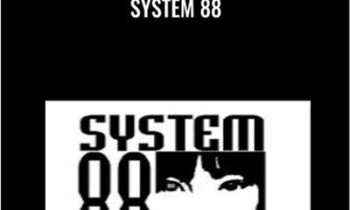ACT in practice 2022 – Steven C.Hayes
Keywords List
to
and
And
a
A
The
the
you
You
in
Summary
• ACT in practice 2022 - Steven C.Hayes Apply ACT with Confidence Gain practical tools for applying ACT from Dr. Steven C. Hayes through 10 online modules featuring extensive demonstration videos, network diagramming, clinical analysis, treatment planning, reads skills practice, and more.
• Lifetime Access Course enrollment comes with lifetime access to all course materials, plus you’ll be protected by a 14-Day Money-Back Guarantee.
• Confidently Apply ACT from Intake through Treatment Create a guiding framework for effectively usingacceptance and commitment therapy to cultivate lasting change The Gap between Theory and Practice It’s one thing to know the ACT model and its principles in the abstract.It’s another to implement them in a way that’s impactful and organic, especially when you’re sitting across from a challenging client and the clock is ticking.With clients who seem disengaged and resistant to change, or cling to goals of diminishing “bad” feelings, the way forward is often unclear.In these scenarios, the theory might make perfect sense to practitioners conceptually . .
• .But when it comes to applying ACT, they’re less confident.Self-doubt creeps in, and they hesitate to make their next move, questioning if it’s the best one to guide the client toward meaningful progress.And unlike the masterful sessions clinicians see in workshops, many of them instead share experiences like the following: They work comfortably with acceptance and defusion, but struggle to find the right exercise to target self-as-context, so avoid it in sessions They sometimes feel like teachers instead of therapists, relying on lecturing to introduce concepts instead of weaving experiential exercises naturally into sessions They feel stuck when it comes to challenging clients, unsure of how to move forward or make their sessions as valuable as possible They hesitate to push certain clients to engage with difficult thoughts or feelings for fear of demotivating them further, but end up on different pages about their therapeutic aims They approach sessions with rigid ideas about what should happen next rather than being able to respond flexibly to the moment Experiences like these are surprisingly common among ACT practitioners.Even skilled clinicians can feel uncertain when tailoring treatments for particularly difficult clients — especially without resorting to cookie-cutter interventions.But why is this the case, when we know the model and have seen it work?The answer goes beyond simply practicing more of the same, into something at the heart of this method.
• How a Process-Based Framework Helps You Apply ACT More Effectively 1.It helps you think flexibly instead of linearly Human lives are not composed of a few events laid out in a linear fashion.
 System 88 - Docc Hilford & Dr. Lisa Chin
1 × $25.00
System 88 - Docc Hilford & Dr. Lisa Chin
1 × $25.00 21 Day Inner Healing Journey - Jimmy Evans
1 × $20.00
21 Day Inner Healing Journey - Jimmy Evans
1 × $20.00 $42000 Mastermind Manuscript 2008 - Rich Schefren
1 × $23.00
$42000 Mastermind Manuscript 2008 - Rich Schefren
1 × $23.00 [BIG Collection Real Estate] Real Estate Web Academy – Great Real Estate Giveaway
[BIG Collection Real Estate] Real Estate Web Academy – Great Real Estate Giveaway
 'Quantum' Chakra Clearing and Balancing Series - Jonette Crowley
'Quantum' Chakra Clearing and Balancing Series - Jonette Crowley
 "Is Your Soul Allowing You To Heal?" -- All 7 Recordings in the Series (6 Hours of Audio Clearings)
"Is Your Soul Allowing You To Heal?" -- All 7 Recordings in the Series (6 Hours of Audio Clearings)
 System 88 - Docc Hilford & Dr. Lisa Chin
System 88 - Docc Hilford & Dr. Lisa Chin  21 Day Inner Healing Journey - Jimmy Evans
21 Day Inner Healing Journey - Jimmy Evans  $42000 Mastermind Manuscript 2008 - Rich Schefren
$42000 Mastermind Manuscript 2008 - Rich Schefren 

